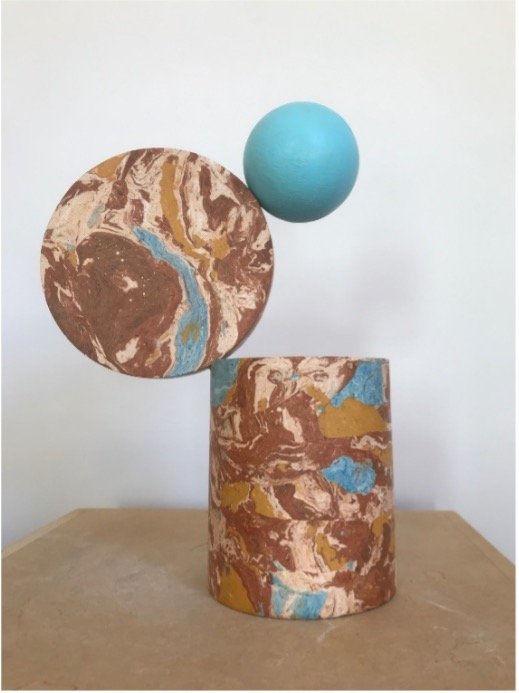Issue 45 Tipping Points - Michaela Hall - "The Art of Balance"
Balance is something that we may hear discussed in many different contexts, especially in the art world. It can stretch from composition to a physical balance of objects. It’s something that can be both unnerving and keep us on our toes and comforting and satisfying when we feel that ‘perfect’ balance. Seeking to visually represent balance is an art in itself, it’s something that should be unspoken and need no explanation – something we sense or feel while viewing an artwork.
An artist who allows us to do exactly this with their work is Swedish artist Malou Palmqvist. Their sculptures are playful with materials we want to touch and feel, they’re visually striking in colour and shape and the one thing they all have in common is that they play on the idea of balance. They look like one element at any moment could fall or break – yet the luscious colours and textures give a contrasting feeling of comfort and satisfaction in the balance of the piece. In the first of two sculptures below you can see one twisted looking neutral form that almost resembles playdough – on top of this is a strong sphere balanced which mirrors its environment. In another you can see sculptural objects covered in a marbled metallic effect with a pop of vibrant blue running through that matches the small blue sphere propped at the top of the formation. Both of these pieces are enticing in their materials and seem like they are defying gravity and material – yet the way they are pieced together by the artist seems harmonious and balanced, they play on our ideas of what balance looks like.
While the idea of balance does make our minds jump straight to the idea of stacking things and making them stand, it means so much more. Balance is also essentially about symmetry and perspective. This is something that is explored in American artist Chris Burden’s ‘Urban Light’. The public art piece has been exhibited across America in key locations such as Los Angeles and New York and invites the viewer to explore the sculptural installation that features two-hundred and two antique street lamps. The reason that this piece plays with out perception of balance is that from afar it looks like a perfectly symmetrical arrangement. However, as viewers enter the installation, they soon realise that depending on where they stand they see the arrangement differently as the lamps play on angles and the individuals perception. Something that seems perfectly balanced soon can seem chaotic and unpredictable.
What these artworks can teach us is that the art of balance isn’t always what it seems, artists can use balance as a tool for playing with our experience and impression of something and this can vary from person to person. What one viewer may find chaotic another may find satisfying and our approach to the artwork and its surroundings can make this vastly different. What is really special though, is that this is art of balance is universal and needs no explanation, its something we call all comment on, feel and understand in different ways, a true representation of visual language.





